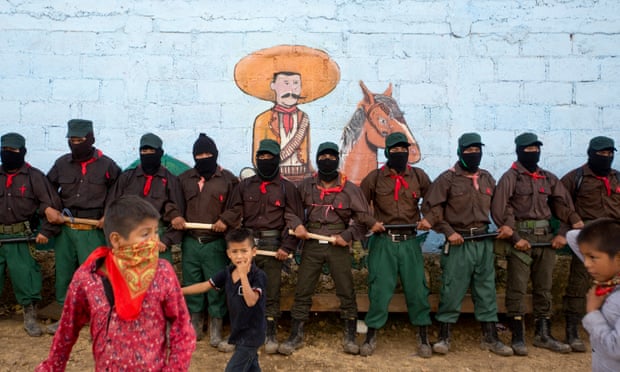AN INFINITE REVOLUTION
When did the Mexican Revolution end? Some have it ending in 1920 (e.g Wasserman and Wikipedia 😃). Others (Castro and Gonzales) see it ending in the late 1930s or early 1940s, respectively. Still, there are some that say the revolution is still on going.
Based on what I've learned this semester, I feel that the Revolution--with a capital R--ended in the 1920s with Alvaro Obregón's presidency. While no president ever brought to fruition all the revolutionary goals, Obregón brought stability, attempted to redistribute lands, encouraged a nationalist
 |
| Obregón |
LAND MATTERS
Obregón addressed land reform in earnest. Land reform was the backbone of the agrarian movement in the Revolution, the thing of Zapata and Villa (at times antagonists and allies of Obregón). It was the campaign promise for previous revolutionary leaders that they never delivered. Obregón created the ejido system which were state-owned lands but freely given to local farmers to use as their own. This helped local economies and people. Of course, this wasn't a perfect system. Obregón often seemed to target the use of ejidos to placate politically active and disruptive communities in places such as Morelos and Yucatan (Gonzales 190). Surely if Zapata, the "fiery apostle of agaraismo" (qtd. in Brunk 48) was still alive he would not be happy with the ejido system. His Plan de Ayala and slogan "Land and Liberty!" meant owning their own land, not expanding the federal government's role in their lives.
Still, Obregón's was the first concerted effort in the direction of following the Consititution of 1917, a big part of which contains verbiage on land reform. He redistributed land--more than 900,000 hectares during his term--at rates three times more than Carranza (Signet 511).
CARRYING THE TORCH
| Calles |
It was as Obregón's right hand man and Mexico's Secretary of the Interior that Plutarco Calles made connections to farmers and other lower class workers during his tenure. Calles would take Obregón's plan and dramatically expand it when he became president. And that is how the revolutionary ideals were carried forth.They may not have been achieved by one president, per se, but they were built upon by succeeding presidents.
REVOLUTIONARY IDEALS AT THE HEART OF MEXICO
While land reform is less an issue in modern Mexico, political and social issues that existed in the early 1900s, still reverberate today. Acknowledgment of indigenous peoples' rights, inter-class relations, foreign influence in Mexico, local identity vs. nationalism, how leaders are elected and how long they remain in office, and workers' rights are timeless issues. Perhaps the Mexican Revolution will go on until these can be adequately addressed. Perhaps, new revolutions are occurring each day.


No comments:
Post a Comment